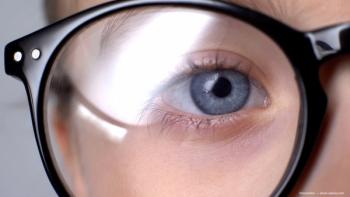
Blog: MRI findings of undereye filler and filler migration
Hyaluronic acid fillers are used for undereye volume correction, detailing aging effects on facial anatomy, common complications, and optimal injection techniques. Imaging tools such as MRI can prove to be beneficial for patient assessment.
The use of hyaluronic acid (HA) fillers to correct volume loss under the eyes has become a popular and highly requested procedure, as it is minimally invasive, can provide rapid aesthetic results, and is typically painless. However, the undereye area is challenging to treat due to aging-related changes in the orbicularis oculi muscle, malar and postseptal fat, orbital septum, and ligaments such as the orbicularis retaining ligament, zygomatic cutaneous ligament, and tear trough ligament.¹
With aging, skin elasticity diminishes under the eyes, fat and muscle atrophy, and fat pad herniation occurs due to the weakening of the orbital septum and ligaments. These factors contribute to patients’ dissatisfaction with their appearance. Often, weakened muscle support and fat redistribution lead to fluid collection under the eyes, contributing to malar edema or malar mounds, which create a bulging and puffy appearance. Due to these complex aging processes and anatomical changes, patients often seek aesthetic intervention.
In an attempt to address these concerns, overuse of filler or improper injection technique can lead to complications, such as filler migration and foreign body granuloma formation. Filler migration, defined as filler presence in an area other than the injection site, can be caused by several factors: high filler volume causing overflow, injection under high pressure, facial muscle movement, and gravity.²
Additionally, findings from recent studies have shown that HA fillers can last years, contrasting with the traditionally regarded duration of 3 to 12 months.³,⁴ This can lead to injectors assessing patients incorrectly and injecting HA fillers too frequently, causing a characteristic puffy appearance instead of natural volume restoration. Foreign body granulomas, a potential adverse effect, are typically painful and have a delayed onset.⁵ These lesions form as a result of an inflammatory response to the injected material and are composed of macrophages that fuse into multinucleated giant cells.⁶ Injection of HA filler into the incorrect area or plane under the eye can also lead to complications.
Subcutaneous filler injections can result in edema, visible lumps, and the Tyndall effect—a bluish discoloration of the skin caused by light scattering when HA is placed too superficially. Intramuscular injection can lead to mobility issues, affecting the undereye’s natural movement. Therefore, injecting HA filler in the preperiosteal plane, just above the orbital bone along the orbital rim, with a cannula is safest to prevent complications. Due to these reasons, expertise and detailed anatomical knowledge are crucial for successful aesthetic correction and patient satisfaction.
Along with understanding undereye anatomy and correct injection techniques, aesthetic providers must distinguish between good and poor candidates for undereye filler. Patients with mild to moderate volume loss and good skin elasticity generally experience better aesthetic outcomes than those with more than 1 cm of excess skin. Patients with festoons, malar pads, or protruding fat are unlikely to see improvement with HA filler and may benefit from blepharoplasty. Injectors must be adept at treating a variety of concerns and tailoring treatment plans to individual patients.
MRI findings
Imaging techniques are useful for visualizing soft tissues and assessing filler placement. US has gained popularity in aesthetic medicine as an accessible, cost-effective, and practical tool. It serves as a safety measure, allowing injectors to assess patients, visualize vasculature prior to injection, and manage complications effectively. Although US technology has advanced, MRI remains superior for its soft tissue contrast, detailed imaging, and ability to detect hydrophilic substances. HA filler, being hydrophilic, is visible on MRI as hyperintense on T2-weighted scans and hypointense on T1-weighted scans.
CT has been suggested as an MRI alternative, but MRI is preferred to avoid ionizing radiation exposure. In a 2022 case study by Master and Roberts, MRI (sagittal T2 fat saturation) was used to assess a patient who received 3 HA filler treatments over 2 years, with no evidence of migration; filler remained localized to the injection area with no spread. However, filler longevity was variable, with the chin filler nearly degraded, whereas the midface retained filler over 27 months.⁷
In another study, MRI detected HA filler in patients who had not received it for at least 2 years. HA filler was detected in all 33 patients. Twenty-one had not received filler in 2 to 5 years and 12 in more than 5 years (with a few in 8 to 15 years). A 64-year-old patient had hyperintense filler signals in infraorbital and postseptal regions, indicating longevity well beyond 24 months.⁴ MRI thus helps assess filler placement, localization, and longevity, highlighting that refreshing filler every 12 to 24 months may be unnecessary and could lead to overfilling and migration.
A 2014 MRI study observed filler in patients with both normal and complicated outcomes, such as granulomas and lymph node enlargement. T1- and T2-weighted scans were performed, with contrast-enhanced fat-suppressed scans for patients with complications. Results indicated MRI effectively detected subcutaneous inflammatory granulomas caused by filler. Lymph node enlargement occurred in 65% of patients with complications and in 31.5% of those with normal outcomes. The authors noted that high-frequency US may be a more accessible first-line diagnostic tool whereas MRI offers superior landmark and soft tissue distinction.⁸
Treating filler migration and filler complications
Filler migration can be diagnosed through visual assessment or a skin pinch test if imaging such as MRI is unavailable. Before dissolving migrated filler, a thorough assessment of the patient and treatment history is essential. Information on the type and volume of filler and treated areas is crucial for crafting a treatment plan. Migrated undereye filler may appear as visible bulging or puffiness under the eyes or as a puffy appearance in the medial cheek, indicating migration past the orbital rim.
A bluish-gray discoloration (Tyndall effect) also signals migration and poor injection technique. To visualize landmarks, examining the undereye area in natural light and having patients make facial expressions can reveal bulging. The skin pinch test helps identify thickened or firm areas where too much filler was likely injected subcutaneously. Once the filler is located, an appropriate treatment plan can be created.
In my practice, I use hyaluronidase cautiously for new patients with filler migration. Literature suggests that 5units of hyaluronidase dissolve 0.1 mL of 20 mg/mL HA, but evidence varies on dosage. The chart below (Table9) provides a guide to hyaluronidase use based on findings from published studies (except for vascular occlusion). After HA dissolves, patients can be reassessed after 2 weeks and a new treatment plan can be developed if needed. When injecting the undereyes, I take a conservative approach, using less than or equal to 0.5 mL of low-viscosity HA filler per eye per session. Using a cannula and staying in the preperiosteal plane is essential for safe and pleasing outcomes.
It is important to know a patient’s treatment history and whether they have any residual filler before treating them with additional filler or with blepharoplasty. In a 2015 case report, a 57-year-old woman was seen for lower blepharoplasty and denied having any filler injected in her tear trough region. She claimed that only her nasolabial folds had been injected 1.5 years earlier, which was confirmed by medical records. During the surgery, small droplets of clear, gelatinous-appearing material, identified as HA filler, were found scattered throughout the orbicularis oculi muscle bilaterally. This migrated filler was dissolved with 0.2 mL of hyaluronidase on both sides, and the patient achieved optimal results. In this case, surgery allowed for a direct visual assessment of filler deposition and migration. MRI could have been useful as a presurgical screening tool to ensure there was no residual filler.
The same study reported that another 44-year-old woman complained of a “lumpy right lower eyelid,” which she had previously been told was “water retention.” There was also a slight bluish discoloration, which can be attributed to the Tyndall effect. Similarly, this patient only recalled having her nasolabial folds injected 4 years prior, which had been massaged to the point of discomfort. She was treated with 0.3 mL of hyaluronidase in the right lower eyelid, which eliminated the migrated filler and gave her a more aesthetically pleasing tear trough. Visual assessment was used by the injector, but MRI would have been useful in this case to confirm the injector’s diagnosis and visualize the area and spread of the filler.
Although hyaluronidase can be lifesaving and incredibly useful in aesthetic and ophthalmologic surgery, caution should be exercised in its use, especially as there is no established protocol for its administration. Hyaluronidase is an endoglycosidase that breaks the glycosidic bonds of HA, a glycosaminoglycan that is a major part of the extracellular matrix. It breaks down HA into monosaccharides but can also break down other glycosaminoglycans in the area.
Therefore, excessive amounts should be avoided, and correct dissolver placement must be ensured to avoid posthyaluronidase syndrome.10,11 One study defines it as “either hollowing and volume loss, loss of skin elasticity, or skin pigmentation exceeding the profile treatment appearance.” The study treated patients with hyaluronidase for the following indications: swelling in 52% of patients, lumpiness in 20%, and presurgical blepharoplasty in 17%. A satisfactory result was achieved in 59% of cases, 24% had insufficient treatment requiring further hyaluronidase, and 18% experienced hollowing, indicating posthyaluronidase syndrome.11 On the other hand, HA fillers with high cross-linkage and a high concentration of HA require more time to dissolve with hyaluronidase. Navigating these options can be challenging, but there are various ways to achieve positive aesthetic outcomes, with MRI as a useful diagnostic tool.
Although undereye filler is safe and effective when used correctly, there are many other treatment options for rejuvenating the undereye region. Platelet-rich plasma (PRP) and platelet-rich fibrin (PRF) involve drawing the patient’s blood, centrifuging it to separate the platelets with growth factors, and injecting it into the undereye area.12 These treatments are subtle and require multiple sessions (minimum of 3 to 4), but they can stimulate collagen production, which can naturally restore volume loss. The difference between PRP and PRF is that PRF contains more white blood cells and fibrin, allowing for a gradual release of growth factors, whereas PRP directly applies the growth factors. Polynucleotides have also become popular. These DNA fragments promote skin regeneration by stimulating fibroblasts and can be used topically to improve skin or injected for natural biostimulation.13
Noninvasive treatments can also subtly improve the undereye region. Ablative lasers use heat to stimulate collagen production, reduce pigmentation, and improve skin texture, whereas fractional lasers stimulate collagen production by creating microinjuries in the skin. Ablative and fractional lasers can be beneficial, but they generally require approximately a week of downtime for healing (some ablative lasers may require 1 to 2 weeks). Nonablative lasers and radiofrequency-based devices can improve skin without damaging the surface. Radiofrequency adds heat to the deep layers to subtly stimulate collagen, whereas nonablative lasers use light-based energy at specific wavelengths to heat the deep dermal layers through microthermal zones, stimulating collagen production.14
In conclusion, undereye rejuvenation is not a one-size-fits-all treatment; it requires expert assessment and a customized plan that considers each patient’s unique anatomy and aesthetic goals. Providers should adhere to the highest safety standards and stay informed about new treatment options to provide the best possible care. Incorporating imaging methods such as US and MRI can enable providers to deliver superior care and achieve optimal aesthetic outcomes.
References:
Alghoul M, Codner MA. Retaining ligaments of the face: review of anatomy and clinical applications. Aesthet Surg J. 2013;33(6):769-782. doi:10.1177/1090820X13495405
Jordan DR, Stoica B. Filler migration: a number of mechanisms to consider. Ophthalmic Plast Reconstr Surg. 2015;31(4):257-262. doi:10.1097/IOP.0000000000000368
Master M. Hyaluronic acid filler longevity and localization: magnetic resonance imaging evidence. Plast Reconstr Surg. 2021;147(1):50e-53e. doi:10.1097/PRS.0000000000007429
Master M, Azizeddin A, Master V. Hyaluronic acid filler longevity in the mid-face: a review of 33 magnetic resonance imaging studies. Plast Reconstr Surg Glob Open. 2024;12(7):e5934. doi:10.1097/GOX.0000000000005934
Ferreira Costa AL, Caliento R, da Rocha GBL, et al. Magnetic resonance imaging appearance of foreign-body granulomatous reactions to dermal cosmetic fillers. Imaging Sci Dent. 2017;47(4):281-284. doi:10.5624/isd.2017.47.4.281
Lee JM, Kim YJ. Foreign body granulomas after the use of dermal fillers: pathophysiology, clinical appearance, histologic features, and treatment. Arch Plast Surg. 2015;42(2):232-239. doi:10.5999/aps.2015.42.2.232
Master M, Roberts S. Long-term MRI follow-up of hyaluronic acid dermal filler. Plast Reconstr Surg Glob Open. 2022;10(4):e4252. doi:10.1097/GOX.0000000000004252
Di Girolamo M, Mattei M, Signore A, Grippaudo FR. MRI in the evaluation of facial dermal fillers in normal and complicated cases. Eur Radiol. 2015;25(5):1431-1442. doi:10.1007/s00330-014-3513-2
King M. Management of Tyndall effect. J Clin Aesthet Dermatol. 2016;9(11):E6-E8.
Jung H. Hyaluronidase: an overview of its properties, applications, and side effects. Arch Plast Surg. 2020;47(4):297-300. doi:10.5999/aps.2020.00752
Wilde CL, Jiang K, Lee S, Ezra DG. The posthyaluronidase syndrome: dosing strategies for hyaluronidase in the dissolving of facial filler and independent predictors of poor outcomes. Plast Reconstr Surg Glob Open. 2024;12(4):e5765. doi:10.1097/GOX.0000000000005765
Rao V, Chi S, Woodward J. Reversing facial fillers: interactions between hyaluronidase and commercially available hyaluronic-acid based fillers. J Drugs Dermatol. 2014;13(9):1053-1056.
Jones D, Tezel A, Borrell M. In vitro resistance to degradation of hyaluronic acid dermal fillers by ovine testicular hyaluronidase. Dermatol Surg. 2010;36(1):804-809.
King M, Convery C, Davies E. This month’s guideline: the use of hyaluronidase in aesthetic practice (v2.4). J Clin Aesthet Dermatol. 2018;11(6):E61-E68.
Newsletter
Don’t miss out—get Ophthalmology Times updates on the latest clinical advancements and expert interviews, straight to your inbox.



















































.png)


